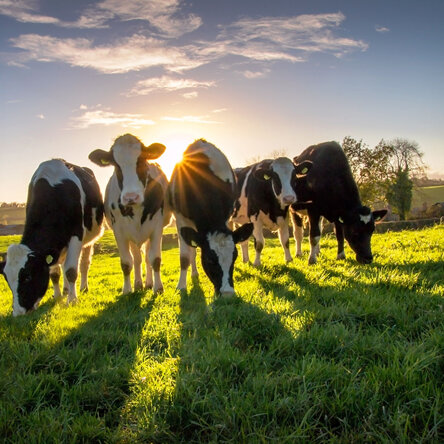Franklin Vets
Franklin Vets - excellence in veterinary care for dairy, farming, lifestyle, equine and household pets. BESTPRACTICE ACCREDITED NZ.

We know from bulk milk testing that 80% of herds (and 60% of cows) have been exposed to BVD at some stage. However, when we look at our farm’s bulk milk antigen (virus) levels, we rarely find the presence of PI’s in the herd and when we monitor bulk milk antibody levels we rarely see significant rises during or between seasons. So how can this be?
The simple answer is that most PIs (70-80%) die before they hit 2 years of age and enter the herd. So, does this mean if we don’t see changes in our bulk milk samples we don’t need to worry?
Whilst BVD does wreak havoc with repro and production if a PI heifer/ cow or bull makes it into the herd, in many respects, BVD is a more significant issue with young stock. In many countries where BVD has been eradicated one of the main things vets and farmers notice is the improvement in young stock health.
We know that the presence of a BVD PI in a mob of young stock can impact diseases such as scours, respiratory disease, pink eye etc. However, the other major effect is on growth rates, with global reports of reductions in growth rates of 20-30% (think 130 to 190 grams lower daily weight gains!). We have had several good case studies we have seen first-hand in the practice to back these figures up.
BVD can be a sly old fox in terms of how it enters herds. The clever fox doesn’t bust into the chicken run and kill all the chooks in one go - that’s a good way to get shot! The clever fox sneaks in and out and takes one bird now and again. In the same way, as the farmer more easily deals with the dumb fox, we have got on top of blood testing bulls and making sure we identify and remove PI milking heifers/ cows pretty smartly. However, we still have BVD getting through the farm gate!
There has been a fair bit of economic modeling of the costs of BVD, and one clear thing is that the more you spend on BVD control, the less the disease will cost you in the long run.
Prevention of the birth of PIs and/or early removal of PIs are 2 of the key tenets of BVD control. Unless you are vaccinating your herd/ heifers, the most robust prevention comes from testing calves before they leave the calf shed. The earlier you check your calve’s BVD status, the lower the risk of spread.
Our technicians offer a very competitively priced BVD blood testing service at debud time, which is a great way to check you have all your calves screened clear before they leave the shed!
Our goal at Franklin Vets is for every farmer to have their own BVD control plan. This needs to be based on informed decision-making, which means having a good understanding of how the disease works and what your farm’s risk factors are, which means sitting down with your vet and working through it. If you don’t have a robust plan, give your Franklin Vets vet a call and book a time to sit down and chat it through!
Dr Jason Fayers – Farm Vet & Regional Manager, Pukekohe